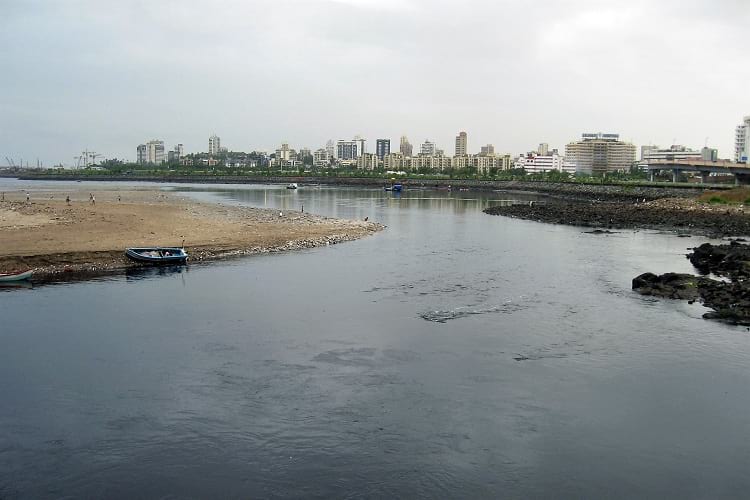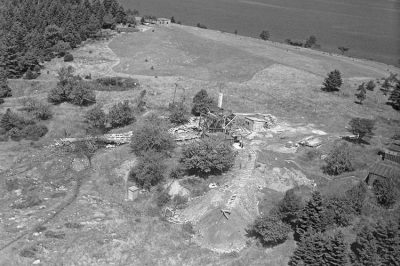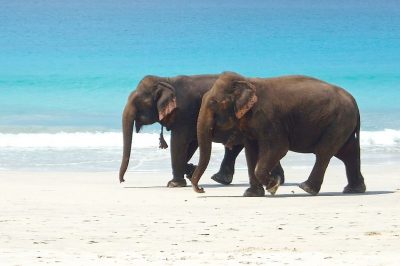2006 Mumbai Sweet Seawater Incident: When the Seawater had Miraculously Turned Sweet
Share

2006 Mumbai Sweet Seawater Incident took place at Mahim Creek. (Nicholas / Wikimedia Commons)
They say curiosity leads man to do certain things that he had never done before. And in a strange case in the financial capital of India, a bizarre incident had led people into doing such extraordinary things that it became a hot topic of discussion for a very long time. Back in the year 2006, the usually salty seawater at Arabian Sea creek had inexplicably turned sweet and people residing by the water body thronged the shores to collect the sweet water, thinking it was some kind of divine intervention.
2006 Mumbai sweet seawater incident
It all started early in the morning of August 19, 2006. The water surrounding Mahimi dargah, situated near the Mahim creek had turned sweet all on its own. When local fishermen began their routine and went out to the sea, they noticed the difference and reported the incident. News then spread like wildfire in the vicinity and by afternoon, Mahim beach was suddenly crowded with people, who wanted to witness the strange incident all by themselves.
One man was seen bathing a child on the Mahim beach, a suburban area in Maharashtra’s capital city of Mumbai. It wasn’t an unusual sight to behold, until people came out in large numbers with utensils, plastic bags and bottles to carry the seawater back home for drinking and cooking purposes. Several others began taking a dip in the Arabian Sea, the western coastline of India, to rid themselves of diseases, thinking the water had, in fact, gained some kind of healing properties. Soon enough, news of the rare occurrence began floating in the entire neighbourhood and authorities had to jump in to intervene.
Reports of a similar incident of seawater turning sweet had also started coming in from Teethal, which is a coastal area in the Valsad District of Gujarat. Unbeknownst to the repercussions of drinking the impure, toxic and polluted water, people from Mahim carried the sweetly-saline seawater home, despite authorities warning them against it. Religious fervour caught up amongst superstitious people and by nightfall, Mahim became a holy site, where believers from nearby areas like Dadar and faraway suburbs turned up to test the rather odd phenomenon. A lot of Hindus, as well as Muslim devotees, claimed that the seawater turning sweet was nothing but the revered Sufi saint Makhdoom Ali Mahimi’s doing and that the seawater was now holy. People in Valsad even worshipped it for possessing extraordinary powers.
What had actually happened?
As soon as news channels reported of the mad rush near Mahim Bay, police officials sprang into action. Geologists at the Indian Institute of Technology – Bombay (IIT-B) called it a natural phenomenon while scientists at the National Institute of Oceanography (NIO) in Versova, said that the phenomenon was not unusual. Researchers said that in the months of monsoon, Mumbai had received heavy rainfall, which had caused rainwater to deposit in underground rocks, which in turn, released the fresh water into the creek. As the density of rainwater is lesser than seawater it floats on the surface of the saline water, mixing with it in the course of time.
Also, due to the continuous rainfall that the city had received, the overflowing Virar Lake emptied its fresh water content into the Mithi River, which mixes in the sea, thus making the water in the Arabian Sea sweeter and less salty in the process. Heavy rainfall and low tide could also have played a role in this phenomenon.
As the authorities from the Municipal Corporation of Greater Mumbai (MCGM), also known as Brihanmumbai Municipal Corporation (BMC), along with the Mumbai police, did their best in keeping everyone away from the strange happening, people did not give up. They drank the seawater, bathed in it, collected it in containers for future use and engaged in all such activities well after midnight. The police kept a strict vigil on the nearby hospitals and medical institutions, hoping to avert any kind of water-related epidemic if the need arose. But no news of an outbreak of water-borne diseases came by till the dawn of next day and no concrete report of what could have caused the water to turn sweet returned.
What did the reports say?
Despite Mahim Bay being an area of excess pollution, the water had changed in taste. A lot of industrial waste as well as raw sewage flow into the water every day, making it unfit for drinking. The Maharashtra Pollution Control board collected samples and sent it for study and also got in touch with the NIO in Goa, which too, confirmed that it was only because of the upsurge of rainwater inside rocks that had caused such an event. BMC health department’s tests conducted on the water samples showed that the salinity was as low as 600 particles per million as compared to the usual 10,000.
Enjoyed this article? Also, check out “Old Man of the Lake: The ‘Stumping’ Story of a Century-Old Log, Bobbing Inexplicably in Oregon’s Crater Lake“.
Fact Analysis:
STSTW Media strives to deliver accurate information through careful research. However, things can go wrong. If you find the above article inaccurate or biased, please let us know at [email protected]













